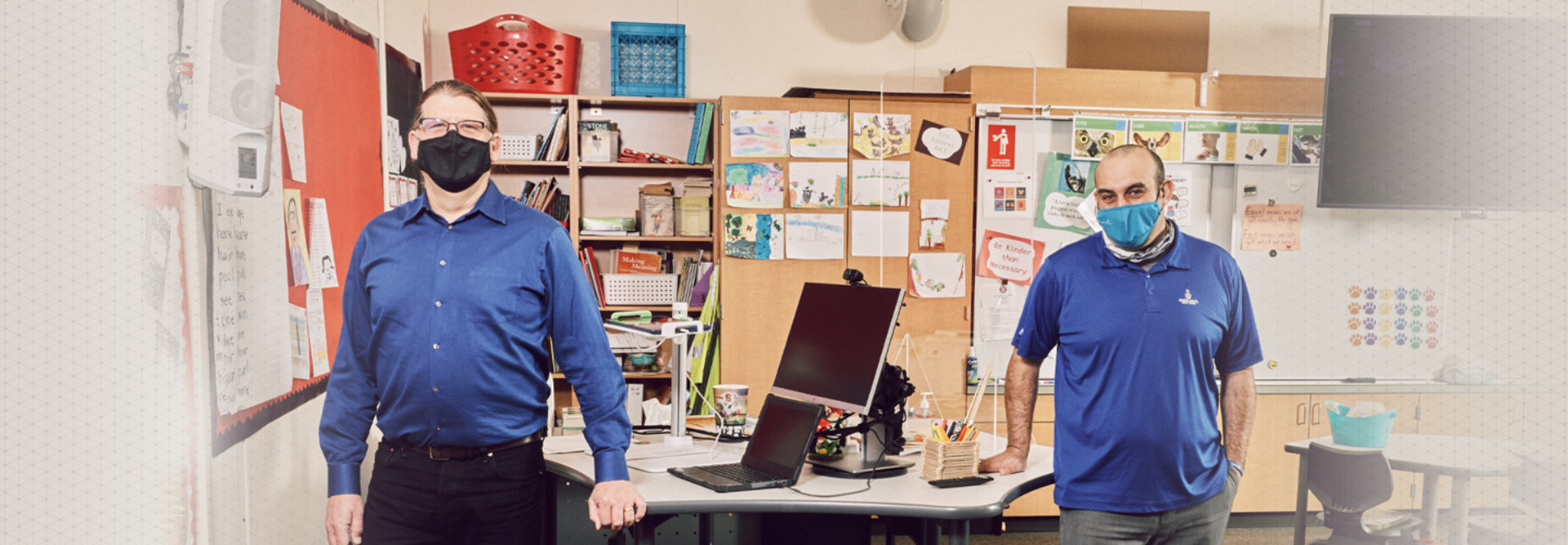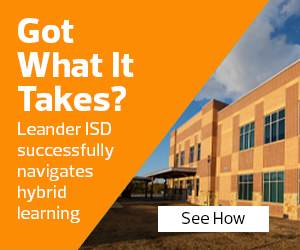Within the hybrid model, some teach in-class and remote students simultaneously, which requires an investment in classroom tech to ensure they can communicate, collaborate and share content.
That includes autotracking video cameras that follow teachers as they roam the classroom; wireless microphones and speakers for better sound, which is important because those in the classroom are wearing masks; and large video displays, so teachers can project the remote students to the classroom, says Mike Peters, CDW•G’s manager of classroom transformation.
“They want to make the student and teacher experience as seamless and natural as possible,” he says.
Districts have purchased audiovisual equipment and other technology to educate students in the short term, but the technology also fits their long-term goals. Before the pandemic, rows of desks facing forward were out, and a modern classroom with Wi-Fi, mobile devices, audiovisual equipment, and flexible furniture that improved engagement and encouraged creativity and collaboration were in.
For districts doing hybrid instruction, these tech investments bring them closer to that vision. They also open up new remote educational opportunities after the pandemic is over, district leaders say.
“This is a large investment for our district. We want to make sure it’s got some longevity and is valuable for years to come,” Landeck says.












